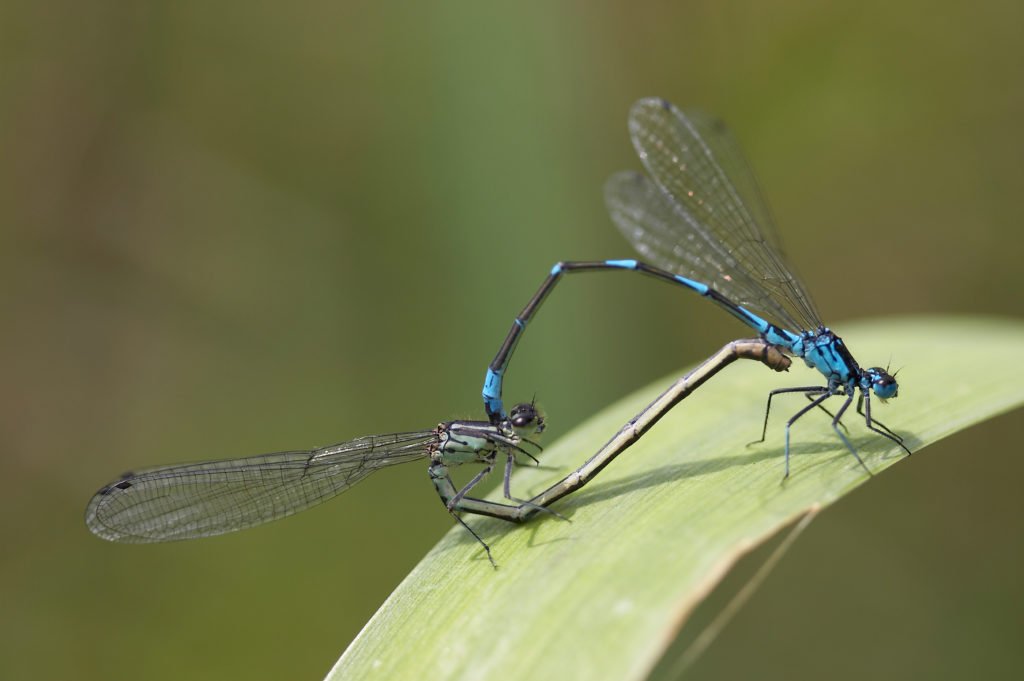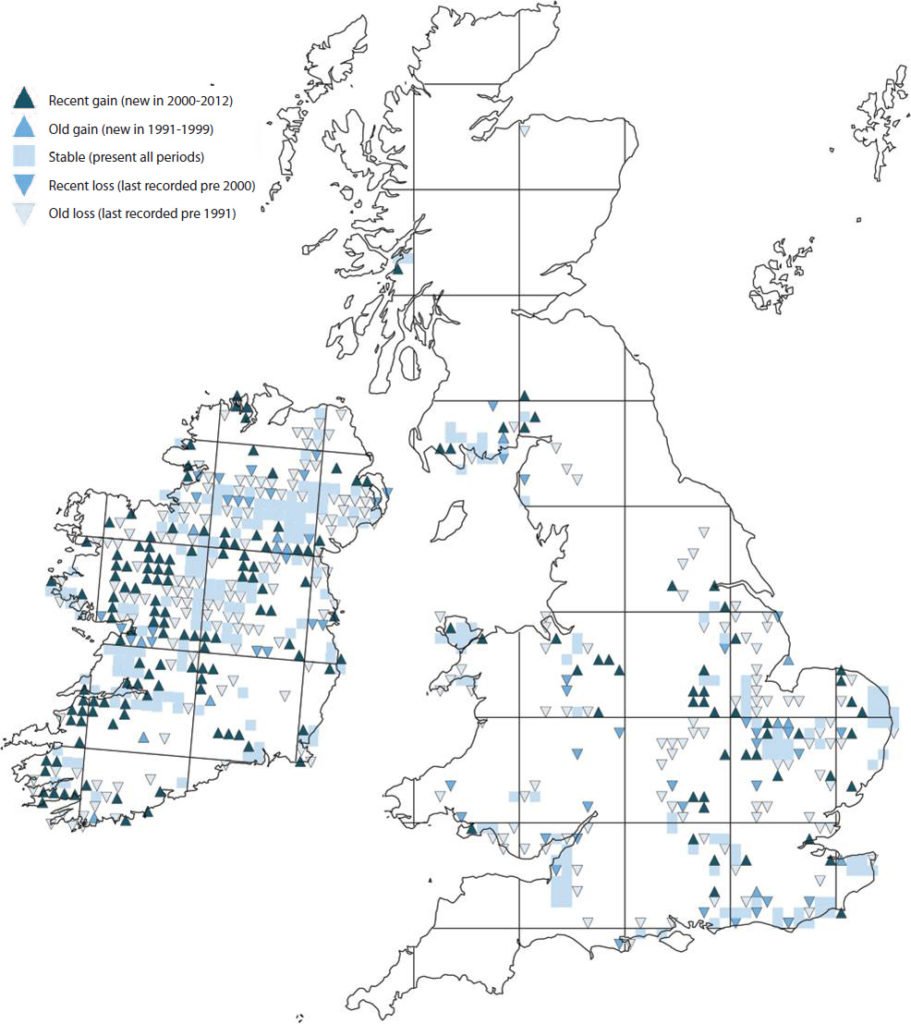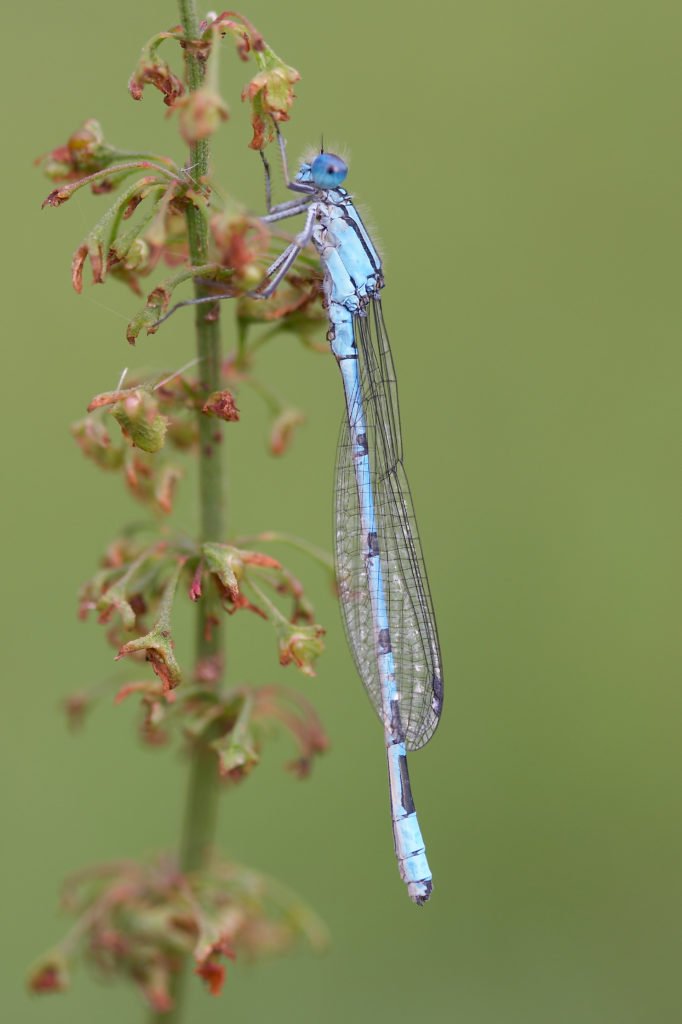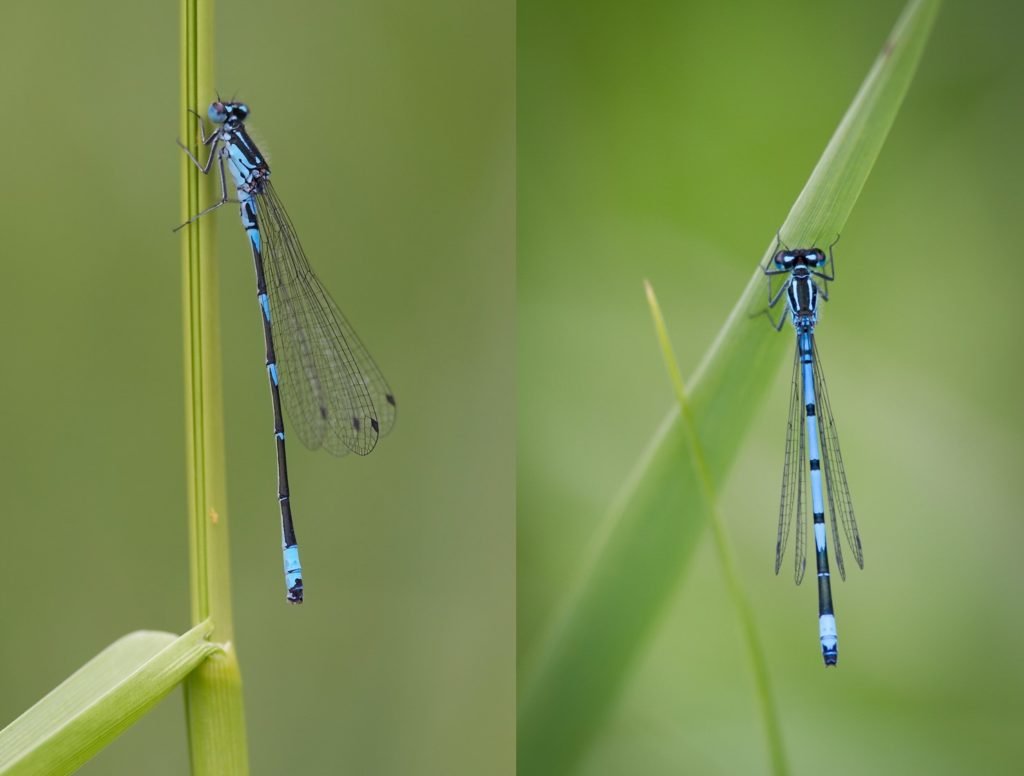BDS Variable Damselfly Survey
20th April 2017
What’s happening to the Variable Damselfly? Is it declining or under-recorded? Could water quality be part of the story? Genevieve Dalley from the British Dragonfly Society explains, and asks you to help

There are many creatures in nature whose name reflects the species perfectly, not least in the world of dragonflies. It is easy to guess the colour of a Brown Hawker or the outstanding feature of a White-faced Darter. And so it is with the Variable Damselfly – a small, easily overlooked insect with a variable distribution, variable physical appearance and a variable subject of focus by the wildlife recording community. However, the British Dragonfly Society (BDS) is keen to better understand this mysterious species and is asking you to help by sending them your records.
The Variable Damselfly is found in and around well vegetated ditches, canals and ponds, rarely in flowing water habitats. It is scattered but uncommon across mainland Britain, with hotspots at sites such as the Ouse Washes and Somerset Levels. The species is widespread across Ireland. Despite being well known from a handful of sites, the species’ distribution still remains something of an unravelled mystery. There are sites adjacent to current populations which look suitable for the Variable Damselfly but which don’t appear to support it. Is there something the species needs which we are not aware of or are such anomalies down to variations in recording effort at different sites? Reasons remain unclear, indicating a need to better understand the species’ habitat requirements and current distribution.

A further, and rather worrying, aspect of the species distribution is the lack of records over the last 20 years for the Variable Damselfly in previously known locations. This suggests a contraction in the species’ range, with implications for its conservation status. Alternatively, this may, again, simply reflect changes in recording effort in different locations over time.

But the Variable Damselfly truly lives up to its name when it comes to the way it looks. The Variable Damselfly is a known as a Coenagrion damselfly, a group of closely related damselflies which are strikingly similar in appearance. The most common Coenagrion in the UK, the Azure Damselfly, is easily confused with the Variable. There is also another blue and black damselfly which is easily confused with the Variable and that is the Common Blue Damselfly. Unfortunately, both the Azure and Common Blue Damselfly can be found in the same habitat as the Variable, making reliable identification a must.

There are a number of features used to separate the species from its very similar cousins. To start with, separate the Coenagrions from the similar Common Blue Damselfly by spotting the short black line on the side of the thorax (the ‘Coenagrion spur’); all Coenagrions feature this whereas the Common Blue does not, instead showing an all blue side to the thorax (‘Common Blue is All Blue’).
The features used to single out the Variable among the other Coenagrions often lead to it being termed the ‘Vampire Damselfly’. Look out for the incomplete shoulder stripes on the thorax (‘the vampire’s dripping fangs’) and the distinctive goblet shaped black mark at the top of the thorax, on segment 2 (depicting a goblet used to catch the dripping blood!). An additional feature is the presence of a small blue line between the eyes (the post-ocular bar) on the Variable Damselfly, which is lacking on the Azure Damselfly. Finally, the shape of the pronotum (body part directly after the head) is distinctive between all these species; the Variable Damselfly sporting a particularly lobed one. All these features together are only relevant when comparing the males of the species. The females are so similar it is advised that only those with experience in differentiating them do so.

However, individuals of Variable and Azure Damselfly have been observed where features have overlapped. For example, there have been individuals with the markings of the Variable Damselfly and the pronotum of an Azure. Are these hybrids or is this further evidence of the variability of the Variable Damselfly? We are keen to get a better understanding of the physical features specific to the Variable Damselfly, and this is where your records can come in.
To answer all these questions, we need your help
For the first time, we are running a Variable Damselfly Survey and we would like as many people as possible to take part. We are asking volunteers to go out to known or potential Variable Damselfly sites and, using the survey ID guide and survey form, record Variable Damselflies. We are asking volunteers to take a photo of the Variable Damselflies they record, firstly to allow us to verify the record and secondly, to be added to a database of Variable Damselfly images.
What about water quality?
There is a theory that the scattered distribution of the Variable Damselfly is partly due to varying water quality levels between sites. In order to obtain more data to explore this theory, we are teaming up with the Freshwater Habitat Trust’s Clean Water for Wildlife project. This project provides free water quality testing kits which are simple and quick to use. We are asking all our Variable Damselfly Survey volunteers to request these kits from the Freshwater Habitats Trust and survey the water quality, where possible, when out surveying for the species, both at sites where you have and have not found them. All water quality data will be shared with the Freshwater Habitats Trust.

Time to get involved
With the Variable Damselfly season usually starting in May it will soon be time to get out and about searching for them. To find out more about taking part in this project, visit the survey website or email Project Coordinator, Alex Berryman, on A.Berryman@uea.ac.uk.
Curious about what the water tests involve?
Watch this ‘how to’ video and read more on the Clean Water for Wildlife webpages.
